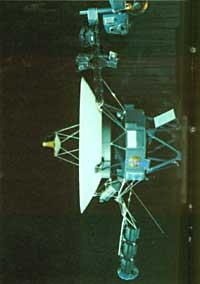Voyager 2's Last Mission: Neptune
1989/10/01 Juandaburre, B. Iturria: Elhuyar aldizkaria
After leaving Jupiter, Saturn and Uranus behind, Neptune arrived in the surroundings last August. In this article we discover what you have found on the smallest planet of the giant planets.
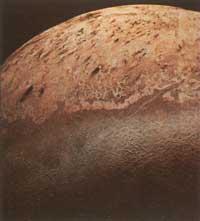
Neptune has been a more spectacular object than Uranus. On this planet, Voyager 2 has found cirrus clouds and other objects, some with dark lights. Neptune's atmospheric activity has been a surprise. Uranus, similar to Neptune in size and composition, showed Voyager a soft appearance three and a half years ago. There was no reason to think that Neptune was going to be different. It was expected that being 50% farther from the Sun and colder would have no activity.
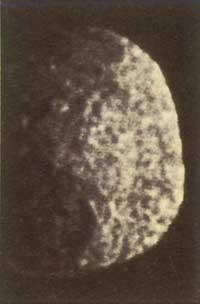
However, months before the meeting the images released by Voyager began to show that Neptune was different. Among them was the so-called “Great Dark Spot”, similar to the “Great Red Spot” of Jupiter. Another smaller dark spot travels the surface of the planet around the south pole. Increasing its size in the photos showed that it had a bright spot in the center. On the other hand, between the Great Dark Spot and the lesser dark spot it was observed that a bright spot circumambulates the surface of the planet. This stain moves faster than the dark one, so it seems that a continuous catch is being played.
On the surface of Neptune there are scattered bright lines. Cirrus is believed to be clouds. It has been calculated that the Cirrus cloud layer is 50 km from the surface, generating shadows in the lower cloud layer. High clouds are formed by methane and low clouds by hydrogen sulfide.
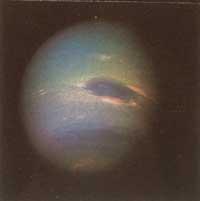
When the sun produces methane in the high atmosphere, through chemical reactions, methane becomes a heavier hydrocarbon. These sink by weight. In the low atmosphere the temperature increases and hydrocarbons are broken down by methane administration. This rises again.
Setting aside Neptune, Voyager 2 looked at Triton, its largest satellite. On the surface of Triton are the “icy lakes” similar to those of the Moon. In some places in icy lakes stands are seen and believed to result from a continuous melting/freezing process.
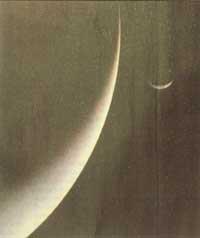
In addition, on the surface of Triton there are fences that have filled valleys and cracks. These flocks are probably methane and nitrogen glaciers that are dumped as land ice glaciers. On the other hand, on the surface of Triton there are long dark lines. These can be ice volcanoes.
This is the provisional interpretation of the data sent by Voyager. It will take a lot to analyze all the data and probably modify the interpretation of some of the phenomena mentioned here.
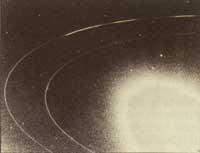
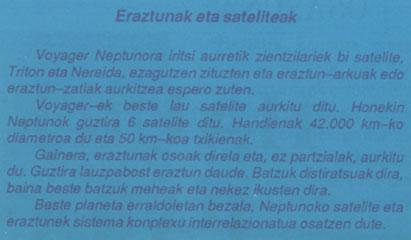

Gai honi buruzko eduki gehiago
Elhuyarrek garatutako teknologia



